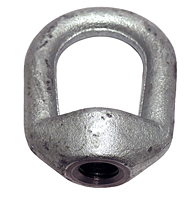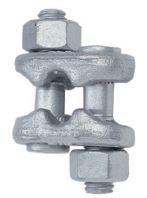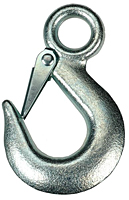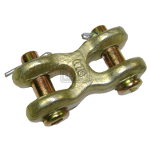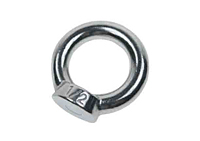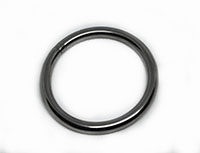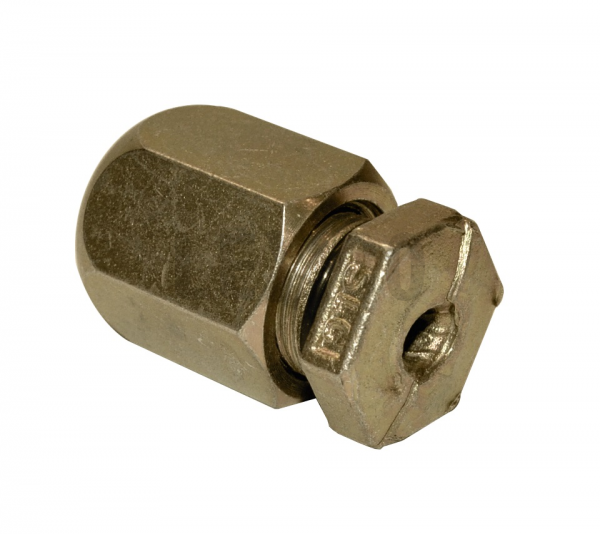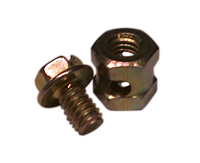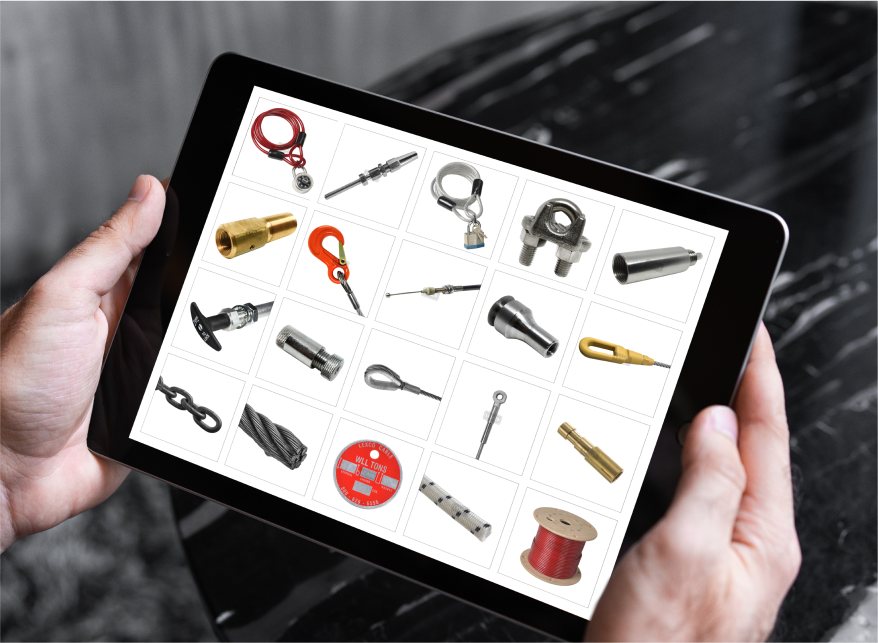B


BOLT SNAP NICKNAME: TRIGGER SNAP
The most common application for a bolt snap is to connect a dog leash to a dog collar. However, it is also used in luggage, as well as industrial marine, agricultural, and construction applications. It is available with fixed eye or swivel eye options and made in zinc die-cast, nickel-plated steel, stainless steel, and brass.
E
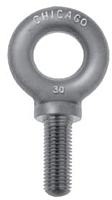

EYE BOLT
An eye bolt is often connected to a wire rope loop. The stem of the eye bolt has external thread. An eye bolt is available with machine thread and lag thread for wood connections, which don’t have rear access. It is available in forged construction, wire bent wire formed, and in a variety of lengths. Machinery eye bolts have a short stem, which is fully threaded. Forged eye bolts are available with a shoulder under the eye or less the shoulder, which is referred to as plain pattern.
F
H
L
M
P
Q
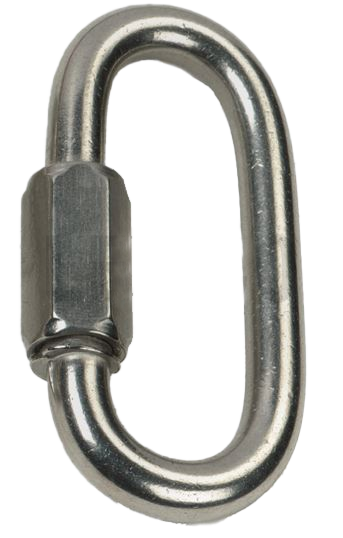

QUICK LINK
A load-bearing piece of hardware, the quick link is fast-connecting. Its standard shape is rectangular, but it is also available in wide jaw, pear shape, delta shape, and square. Made in zinc-plated steel as well as stainless steel, it is commonly attached to wire rope loops. Installation is as simple as turning the hex screw.
R
S
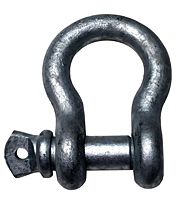

SHACKLE
“A shackle is a convenient way of attaching a wire rope assembly to a load. It comes in a u-shape, called a chain shackle, or a bow-shape, called an anchor shackle. Both of these configurations are available with three different styles of fastener: screw-pin, round-pin, and safety-bolt. Lexco abbreviations: SPAS = Screw-Pin Anchor Shackle RPAS = Round-Pin Anchor Shackle SAS = Safety Anchor Shackle SPCS = Screw-Pin Chain Shackle RPCS = Round-Pin Chain Shackle SCS = Safety Chain Shackle”
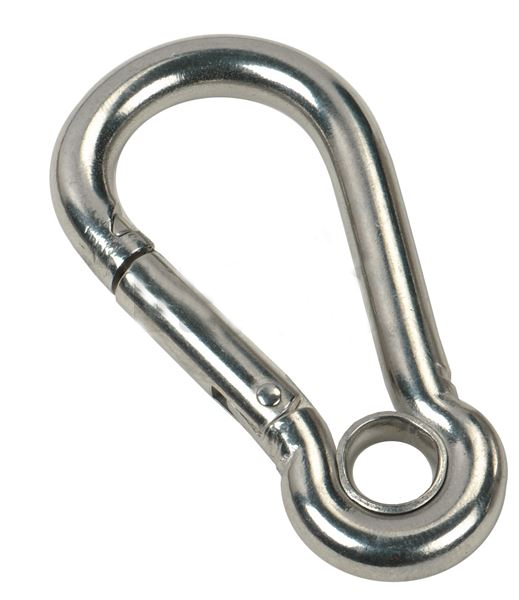

SNAP HOOK SPRING HOOK
NICKNAME: CARABINER
Snap hooks have a spring-loaded gate, which allows them to easily snap over your connecting hardware. They’re convenient for attaching to wire rope loops, but they also have many other fastening applications. They are made in zinc-plated steel as well as stainless steel.
T
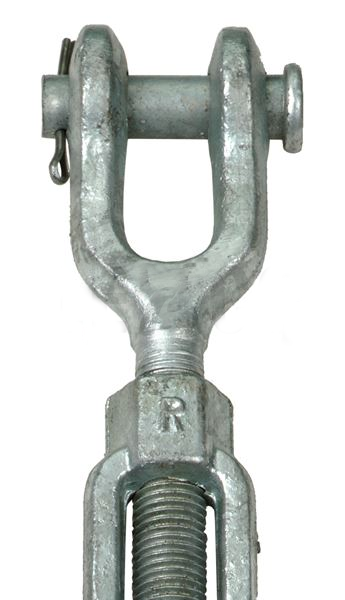

TURNBUCKLE
A turnbuckle has an externally threaded end fastened into an internally threaded mating body. It is used to adjust the length of a wire rope or threaded rod assembly. A traditional wire rope rigging turnbuckle will use either eyes, hooks, or jaw ends (pictured left), which are threaded into both sides of the turnbuckle body. One side of the turnbuckle body has left-hand threads and the other side has right-hand threads. A swage turnbuckle means that on one side of the body, there is a threaded stud providing an in-line connection to a wire rope assembly.
W
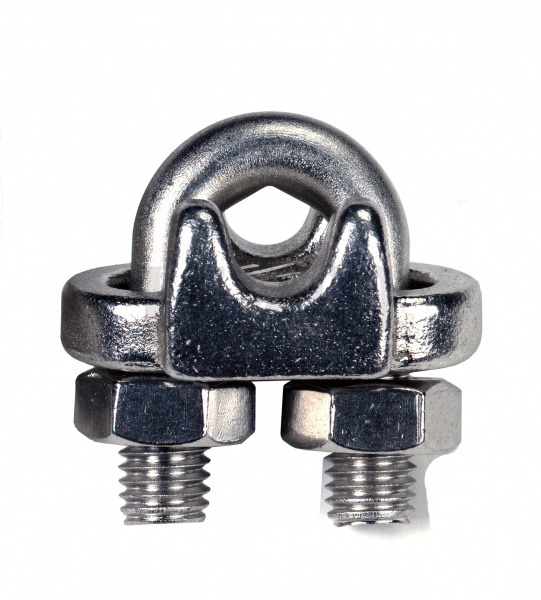

WIRE ROPE CLIP
NICKNAMES: CABLE CLAMP, WIRE ROPE CLAMP
A wire rope clip is comprised of a U-bolt with a saddle and hex nuts and is typically used to form loops. Because you only need a wrench to tighten the nuts, it is ideal for field installations. For diameters 7/16” and below, a minimum of 2 wire rope clips is recommended for a loop. For diameters 1/2” – 5/8”, a minimum of 3 wire rope clips is recommended. For diameters 3/4” – 7/8” a minimum of 4 wire rope clips is recommended. For more information, please visit the Wire Rope Clip product line on Lexcocable.com
Guides And White Papers
Want to learn more about Lexco’s wire rope specifications, or see
them in action yourself? Get started with some of our guides:
